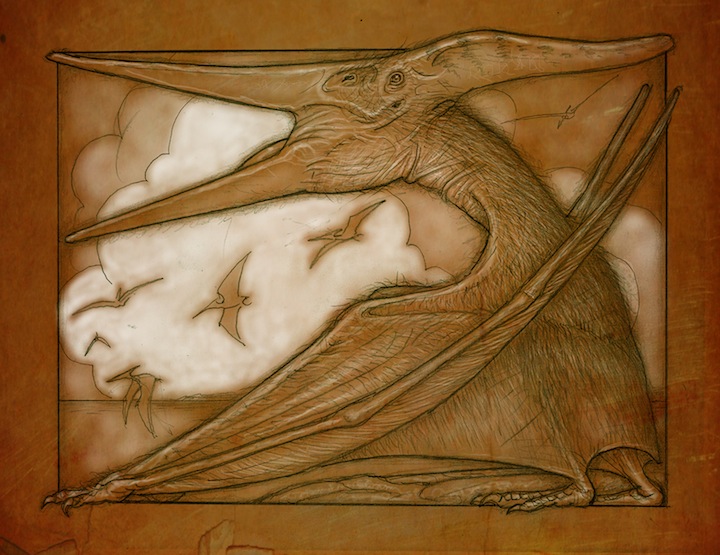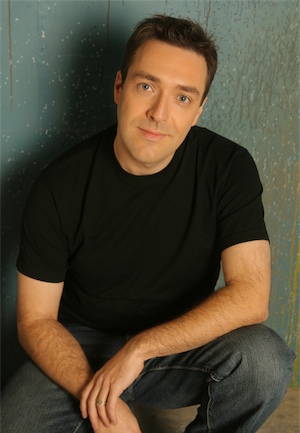
Now here’s something to warm a child’s heart: a musical story about dinosaurs, narrated by Jay Ingram, illustrated by a man who makes museum dinosaur models for a living, and masterminded by master Canadian children’s opera composer Dean Burry, of Brothers Grimm fame.
- Classical Music 101: What Does A Conductor Do? - June 17, 2019
- Classical Music 101 | What Does Period Instrument Mean? - May 6, 2019
- CLASSICAL MUSIC 101 | What Does It Mean To Be In Tune? - April 23, 2019
Carnival of the Dinosaurs gets its premiere on Sunday afternoon at the Isabel Bader Theatre on Charles St at the hands of the NYCO Symphony Orchestra and music director David Bowser.
As in Camille Saint-Saëns’ Carnival of the Animals, Burry introduces us to a variety of dinosaur species — nine of them in all — using a variety of orchestral techniques. As in Saint-Saëns’ iconic work, there is humorous poetry to go with each portrait. In this instance, Burry himself wrote the text. Beautifully intricate illustrations by Hall Train projected onto a big screen complete the presentation.
If Pteranodon starts with a “P” that’s not heard
Then shouldn’t puh-terandon be the right word?
This flying reptile, not a dino, in puh-truth,
Was puh-terrifically puh-talented with wings but not puh-tooth.
And that’s what their name means:
All flap and no chompers,
Enough, though, to soar above those earth-bound stompers,
And puh-travel ‘cross ocean and mountain and puh-tree,
And a long puh-trip like that has to start with a pee.
“I’m not above using poop and fart humour,” laughs Burry as he introduces me to the charms of this new piece.

The composer guides me quickly through the 12-movement, half-hour-long score, which bristles with all sorts of fine instrumental writing that is as humorous as the poems.
“I start the triceratops section with three horns,” Burry says, laughing again.
My impression, on paper, is that Carnival of the Dinorsaurs has the potential to become a 21st century classic. This first performance with the NYCO Symphony Orchestra, a community organization that has a professional core to support amateur players, will serve as a workshop performance, and help everyone involved nip and tuck and smooth any rough edges.
Burry says Jay Ingram is so keen on the piece that he has offered his services as narrator for any future performances, as well.
The composer admits that he has learned over well over a decade as a working composer of opera for young people that you have to keep both kids and parents entertained at the same time.
Burry, who marks his 15th year with the Canadian Opera Company’s after-school programmes this season, may be Canada’s most-produced opera composer (more than 120,0o0 children have seen his opera The Brothers Grimm across North America since 2001), but now that he has passed his 40th birthday, he’s itching to stretch his creative wings a bit.
Besides doing everything he did last year, which includes teaching at the Royal Conservatory of Music’s Glenn Gould School, he is also back in school, having returned to his alma mater, University of Toronto, to get a PhD in composition.
“On one side of Philosophers’ Walk, I’m a teacher; on the other I’m a student,” he quips.
Burry is looking to write purely instrumental music and chamber music, and explore different styles from the safety of academic assignments.
Although Burry began Carnival of the Dinosaurs before going back to school last September, he has been tinkering with it as part of his school work.
He reaches into his bag and pulls out a big paper chart covered in pencilled-in letter sequences. He explains how he’s writing a baroque-style suite for solo piano, with each movement based on the genetic sequencing for a particular ailment.
The opening Allemande is based on the nucleotide sequence for Alzheimer’s disease, for example. “I can’t just write intellectual music,” Burry explains. “The sequence provides the structure, but I also need to put in the emotional content, which is the Alzheimer’s.”
Burry knows from experience how it’s the story — be it told or heard — that will engage the listener, not some intellectual explanation. When notes go missing from a familiar pattern towards the end of the Alzheimer’s Allemande, one gets a real, audible reminder of the disease’s stark, inexorable destination.
In the same way, the composer addresses the exctinction of the dinosaurs at the end of Carnival. As he begins explaining this, I start to worry about all the kids who will leave the theatre with tears in their eyes.
Burry turns a page in the score. Just as the last footsteps of big prehistoric mammals die off, we begin to hear birdsong from the orchestra as a sign of renewed life. “We know that birds evolved from dinosaurs,” smiles the composer.
On an instructional level, Carnival of the Dinosaurs works as an introduction to the symphony orchestra, “But there’s no way I want to be pedantic about it,” Burry insists. “It’s all about the art, then the education follows.”
It’s funny how, in a different sort of way, he’s living that sequence himself these days.
+++
For all the details on the concert, which also includes works by Dmitri Kabelevsky and J.S. Bach, click here.
John Terauds
- Classical Music 101: What Does A Conductor Do? - June 17, 2019
- Classical Music 101 | What Does Period Instrument Mean? - May 6, 2019
- CLASSICAL MUSIC 101 | What Does It Mean To Be In Tune? - April 23, 2019



